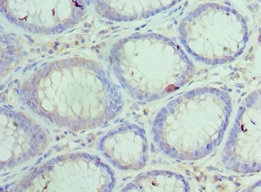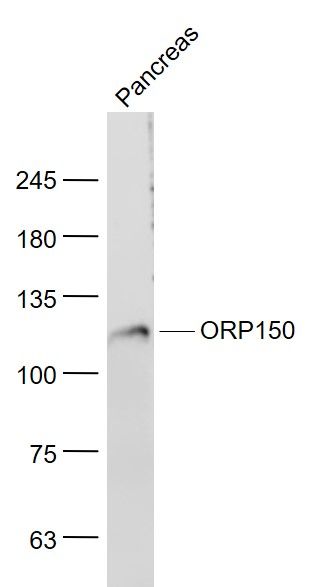ORP150 antibody [C2C3], C-term
GTX102255
ApplicationsImmunoFluorescence, Western Blot, ImmunoCytoChemistry, ImmunoHistoChemistry, ImmunoHistoChemistry Paraffin
Product group Antibodies
TargetHYOU1
Overview
- SupplierGeneTex
- Product NameORP150 antibody [C2C3], C-term
- Delivery Days Customer9
- Application Supplier NoteWB: 1:500-1:3000. ICC/IF: 1:100-1:1000. IHC-P: 1:100-1:1000. *Optimal dilutions/concentrations should be determined by the researcher.Not tested in other applications.
- ApplicationsImmunoFluorescence, Western Blot, ImmunoCytoChemistry, ImmunoHistoChemistry, ImmunoHistoChemistry Paraffin
- CertificationResearch Use Only
- ClonalityPolyclonal
- Concentration0.41 mg/ml
- ConjugateUnconjugated
- Gene ID10525
- Target nameHYOU1
- Target descriptionhypoxia up-regulated 1
- Target synonymsGRP-170, Grp170, HSP12A, IMD59, ORP-150, ORP150, hypoxia up-regulated protein 1, 150 kDa oxygen-regulated protein, 170 kDa glucose-regulated protein, epididymis secretory sperm binding protein, heat shock protein family H member 4, oxygen regulated protein (150kD)
- HostRabbit
- IsotypeIgG
- Protein IDQ9Y4L1
- Protein NameHypoxia up-regulated protein 1
- Scientific DescriptionThe protein encoded by this gene belongs to the heat shock protein 70 family. This gene uses alternative transcription start sites. A cis-acting segment found in the 5 UTR is involved in stress-dependent induction, resulting in the accumulation of this protein in the endoplasmic reticulum (ER) under hypoxic conditions. The protein encoded by this gene is thought to play an important role in protein folding and secretion in the ER. Since suppression of the protein is associated with accelerated apoptosis, it is also suggested to have an important cytoprotective role in hypoxia-induced cellular perturbation. This protein has been shown to be up-regulated in tumors, especially in breast tumors, and thus it is associated with tumor invasiveness. This gene also has an alternative translation initiation site, resulting in a protein that lacks the N-terminal signal peptide. This signal peptide-lacking protein, which is only 3 amino acids shorter than the mature protein in the ER, is thought to have a housekeeping function in the cytosol. In rat, this protein localizes to both the ER by a carboxy-terminal peptide sequence and to mitochondria by an amino-terminal targeting signal. [provided by RefSeq]
- Storage Instruction-20°C or -80°C,2°C to 8°C
- UNSPSC12352203
References
- Novel insights into PORCN mutations, associated phenotypes and pathophysiological aspects. Arlt A et al., 2022 Jan 31, Orphanet J Rare DisRead more
- Identification of Cellular Pathogenicity Markers for SIL1 Mutations Linked to Marinesco-Sjoegren Syndrome. Gatz C et al., 2019, Front NeurolRead more
- PERK Signaling Regulates Extracellular Proteostasis of an Amyloidogenic Protein During Endoplasmic Reticulum Stress. Romine IC et al., 2019 Jan 23, Sci RepRead more
- Elevated chaperone proteins are a feature of winter freeze avoidance by larvae of the goldenrod gall moth, Epiblema scudderiana. Zhang G et al., 2018 Apr, J Insect PhysiolRead more
- The nucleotide exchange factors Grp170 and Sil1 induce cholera toxin release from BiP to enable retrotranslocation. Williams JM et al., 2015 Jun 15, Mol Biol CellRead more
- Unfolded protein response-induced ERdj3 secretion links ER stress to extracellular proteostasis. Genereux JC et al., 2015 Jan 2, EMBO JRead more
- Stress-independent activation of XBP1s and/or ATF6 reveals three functionally diverse ER proteostasis environments. Shoulders MD et al., 2013 Apr 25, Cell RepRead more







